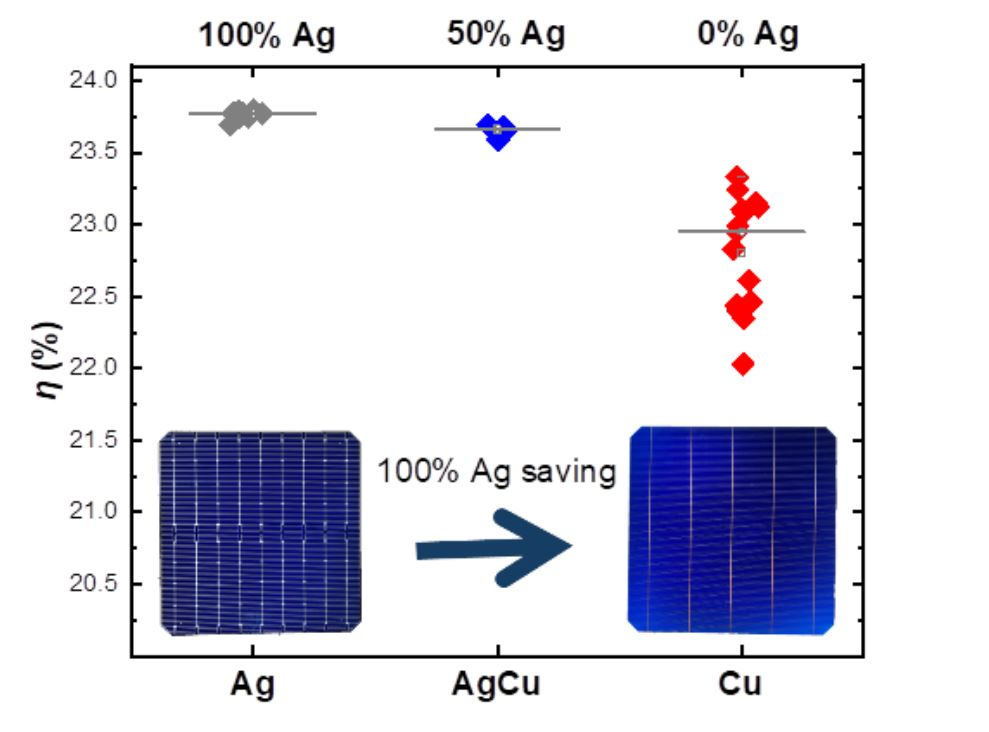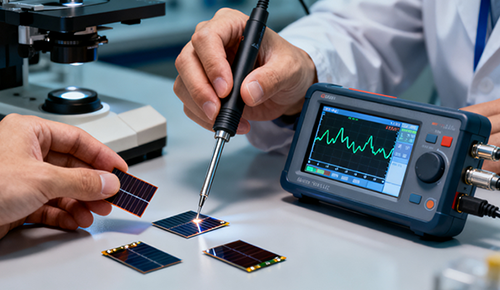Recently, a research institution has made a significant breakthrough in solar cell technology, successfully achieving a world-record efficiency of 23.08% for a copper-metallized heterojunction (HJT) solar cell. This milestone represents a critical step towards reducing photovoltaic manufacturing costs, as copper—an abundant and inexpensive material—holds the potential to replace expensive silver.

According to the study published in Progress in Photovoltaics, the team conducted a detailed comparison of the performance of three metallization schemes: copper, silver-copper alloy, and pure silver. By analyzing factors such as line resistance, finger width, aspect ratio, and contact resistivity, they found that copper outperformed both the silver-copper alloy and pure silver. The heterojunction cell structure is particularly suitable for copper metallization because its transparent conductive oxide layer acts as an effective diffusion barrier, preventing copper from diffusing into the silicon and causing degradation.
In their experiments, the researchers used 135 μm thick n-type monocrystalline silicon wafers and applied three different metallization processes: pure silver, pure copper, and a silver-copper hybrid. Electrodes were fabricated using screen printing technology with different finger opening widths, and various cell samples with different front and back side metallization combinations were prepared. Testing under standard illumination conditions showed that the fully copper-metallized cell achieved a champion efficiency of 23.08%, an open-circuit voltage of 742.4 mV, a short-circuit current density of 37.88 mA/cm², and a fill factor of 85.70%. In comparison, the fully silver-metallized reference cell achieved an efficiency of 23.79%, while the cell with a Ag/Cu front and Ag rear reached a notably high efficiency of 23.95%. However, cells with copper on the rear side generally exhibited lower efficiency, primarily attributed to a reduced fill factor and increased series resistance, resulting in an average efficiency loss of 0.5% to 3%.

Despite challenges associated with copper, such as oxidation and potential contamination, its high abundance and low cost make it a highly promising alternative material for reducing reliance on silver. This research not only validates the application potential of copper in high-efficiency solar cells but also points the way for future process optimization, promising to advance the photovoltaic industry towards a more economical and sustainable direction.